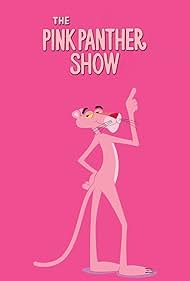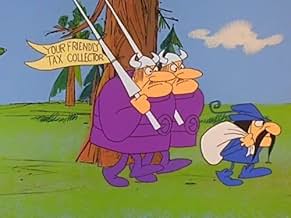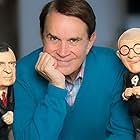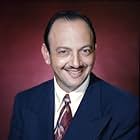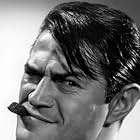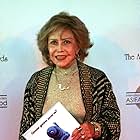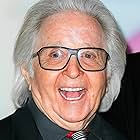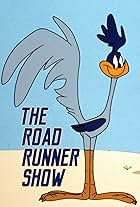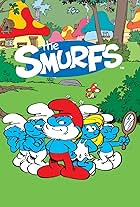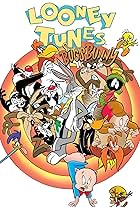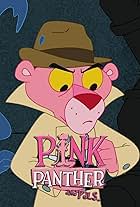VALUTAZIONE IMDb
7,6/10
22.217
LA TUA VALUTAZIONE
Aggiungi una trama nella tua linguaA classy, resourceful panther has plenty of hilarious misadventures, outwitting those who annoy him with his clever tricks.A classy, resourceful panther has plenty of hilarious misadventures, outwitting those who annoy him with his clever tricks.A classy, resourceful panther has plenty of hilarious misadventures, outwitting those who annoy him with his clever tricks.
- Premi
- 1 vittoria e 4 candidature
Sfoglia gli episodi
Trama
Lo sapevi?
- QuizThe character was originally created for the opening credits for the film La pantera rosa (1963), and after this series would be a part of every Inspector Clouseau film made from here on in.
- BlooperEvery single episode features multiple animation errors.
- Citazioni
Pink Panther: [as the hunter runs across the bridge and back onto the ark he created and laughing hysterically] Why can't humans behave more like animals?
- Versioni alternativeThe series was given a unique spin in Germany. Comedic voice-over was added to every episode, with a narrator following along the stories and providing commentary in rhyming verse, full of various wordplays and puns. Many originally unnamed characters were given names, even the Pink Panther himself: in Germany, he was known as Paul or Paulchen (Paulie). Another change was giving the originally male blue Ardwark a female voice and naming her "die Blaue Elise" or "the Blue Elise", and she would at times refer to herself in third person. The German edit also created unique opening and closing titles with original songs. At the end of every episode, Paulchen Panther would turn to the audience and say the rhyming phrase "Heute ist nicht alle Tage; ich komm wieder, keine Frage." ("Today is not every day; I will be back, no questions about it."). The phrase was so popular among German viewers that it became part of everyday use. Adding rhyming commentary to voiceless foreign cartoons was a common thing in Germany. "Tom and Jerry" (1940) and Oggy i maledetti scarafaggi (1986) were also famously given the same treatment.
- ConnessioniEdited into The Ant and the Aardvark (1969)
Recensione in evidenza
Spun off from the opening titles of the hit movie with Peter Sellers and starting out as a series of theatrical cartoons, The Pink Panther came to TV in 1969 and became a long running cartoon hit for NBC. It ran under a number of titles for seven years until ABC gave the panther another life but it lasted only one season.
What I liked the most about the show were the Pink Panther cartoons. Done completely without dialogue (with a couple of exceptions), the episodes relied on sight gags and visual humor and to me that was one of the keys to the show's success.They were also very funny. There was one character who appeared in almost every episode, a little white man that my brother sometimes referred to as "Thing." Here's one mystery that's probably never been solved. What was the name of the little white guy in the Pink Panther cartoons? There were also a number of supporting segments throughout the show's tun. The two that were my favorites were "The Ant and the Aardvark" and "Misterjaw." To me, "The ant and the Aardvark" was a variation on tom and Jerry and the Road Runner cartoons as the aardvark tried to catch one ant for a meal. John Byner showed his versatility as a voice-over artist by portraying both characters. As for "Misterjaw", which capitalized on the success of the movie "Jaws", Arte Johnson, using pretty much the same voice as the military character on "Laugh-IN" was outstanding as the title character. His sidekick, Catfish was voiced by the same guy who voiced "Top Cat" in the 60s, Arnold Stang.
I also remember "The Inspector", a pint-sized version of Seller's Clouseau character. Pat Harrington Jr. did well as the inspector and it showed his ability to handle the French accent.
Later in the run, NBC made history when it expanded The Pink Panther to 90 minutes. Although this version wasn't a success, it started a trend for longer cartoon shows when ABC expanded Scooby-Doo to two hours and CBS expanded "The Bugs Bunny/Road Runner Hour to 90 minutes.
The one constant that went through each of the Pink Panther cartoons was the theme composed by Henry Mancini. It added a jazzier touch to the show's soundtrack. I had a lot of memories of watching The Pink Panther on Saturday mornings and it got me, like many other fans to "Think Pink."
What I liked the most about the show were the Pink Panther cartoons. Done completely without dialogue (with a couple of exceptions), the episodes relied on sight gags and visual humor and to me that was one of the keys to the show's success.They were also very funny. There was one character who appeared in almost every episode, a little white man that my brother sometimes referred to as "Thing." Here's one mystery that's probably never been solved. What was the name of the little white guy in the Pink Panther cartoons? There were also a number of supporting segments throughout the show's tun. The two that were my favorites were "The Ant and the Aardvark" and "Misterjaw." To me, "The ant and the Aardvark" was a variation on tom and Jerry and the Road Runner cartoons as the aardvark tried to catch one ant for a meal. John Byner showed his versatility as a voice-over artist by portraying both characters. As for "Misterjaw", which capitalized on the success of the movie "Jaws", Arte Johnson, using pretty much the same voice as the military character on "Laugh-IN" was outstanding as the title character. His sidekick, Catfish was voiced by the same guy who voiced "Top Cat" in the 60s, Arnold Stang.
I also remember "The Inspector", a pint-sized version of Seller's Clouseau character. Pat Harrington Jr. did well as the inspector and it showed his ability to handle the French accent.
Later in the run, NBC made history when it expanded The Pink Panther to 90 minutes. Although this version wasn't a success, it started a trend for longer cartoon shows when ABC expanded Scooby-Doo to two hours and CBS expanded "The Bugs Bunny/Road Runner Hour to 90 minutes.
The one constant that went through each of the Pink Panther cartoons was the theme composed by Henry Mancini. It added a jazzier touch to the show's soundtrack. I had a lot of memories of watching The Pink Panther on Saturday mornings and it got me, like many other fans to "Think Pink."
I più visti
Accedi per valutare e creare un elenco di titoli salvati per ottenere consigli personalizzati
- How many seasons does The Pink Panther Show have?Powered by Alexa
Dettagli
- Data di uscita
- Paesi di origine
- Lingua
- Celebre anche come
- The New Pink Panther Show
- Luoghi delle riprese
- Grauman's Chinese Theater - 6925 Hollywood Blvd., Hollywood, Los Angeles, California, Stati Uniti(intro & closing: Panthermobile parked in front of theater)
- Aziende produttrici
- Vedi altri crediti dell’azienda su IMDbPro
Contribuisci a questa pagina
Suggerisci una modifica o aggiungi i contenuti mancanti

Divario superiore
What is the Brazilian Portuguese language plot outline for The Pink Panther Show (1969)?
Rispondi